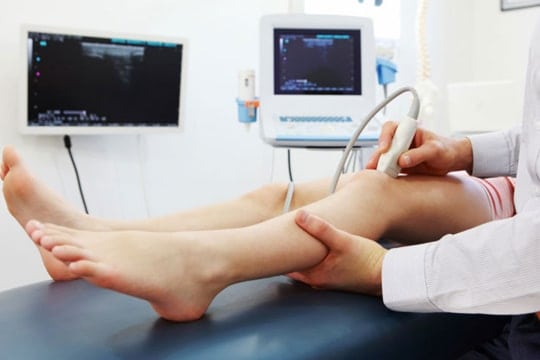What is Ultrasound Therapy?
For the last 80 years, ultrasound therapy has been used as a non-invasive procedure to treat a wide variety of ailments. It is often used to treat swelling, particularly when the swelling is spread over a larger area than usual. It also can be used for phonophoresis, which is when medicine is run through the skin without injection. This makes ultrasound therapy suitable when typical methods are unsuitable for a patient, like one who is scared of needles, or haemophiliacs.

The best way to describe ultrasound therapy is by simply thinking of ultrasounds given to pregnant women, because the technology is essentially the same. Small, handheld probes are placed on the treatment area combined with gel or cream, which can be medicated, depending on the condition in question. The probe vibrates, sending waves through the skin and into the whole body. These waves cause the underlying tissue to vibrate, which can have a variety of benefits which we will look at below.
In general, ultrasound therapy sessions will last no longer than 5 minutes. This simply involves applying the gel or cream, then rubbing the probe round the affected area.
In general, ultrasound therapy sessions will last no longer than 5 minutes. This simply involves applying the gel or cream, then rubbing the probe round the affected area.
For Safe And Effective Physical Therapies and Treatments
CALL US AT (813) 392-2164
The Benefits of Ultrasound Therapy
The waves sent through the body have several broadly applicable benefits, making ultrasound therapy suitable for a good range of issues. As well as heating and relaxing the muscles, ultrasound therapy breaks down connective tissue and increases local blood flow. All of this combines to extend healing rates within the area, making it an appropriate way to speed up slow-healing or chronic issues. We now think that it can also promote the repair of damaged bones. More recently, it has been used to reduce pain from conditions such as osteoporosis and arthritis.
Uses of Ultrasound Therapy
Since the benefits of ultrasound are so broad, it can be used for a huge range of issues. However, it's usually reserved for problems with swollen muscles, particularly when time is considered in the recovery.
The heating and relaxing benefits help alleviate muscle pain, while the increased flow to the affected area will mean that more lymph passes through. Lymph may be a clear fluid that carries white blood cells throughout our body, which fights infection, encourages healing, and removes excess fluid. These three factors combined make it a very effective way to treat swelling and inflammation, not only of the muscles, but also of the joints and ligaments. Issues such as tendonitis, not-acute joint swelling, and chronic inflammation are some of the most commonly treated issues.
The heating and relaxing benefits help alleviate muscle pain, while the increased flow to the affected area will mean that more lymph passes through. Lymph may be a clear fluid that carries white blood cells throughout our body, which fights infection, encourages healing, and removes excess fluid. These three factors combined make it a very effective way to treat swelling and inflammation, not only of the muscles, but also of the joints and ligaments. Issues such as tendonitis, not-acute joint swelling, and chronic inflammation are some of the most commonly treated issues.

